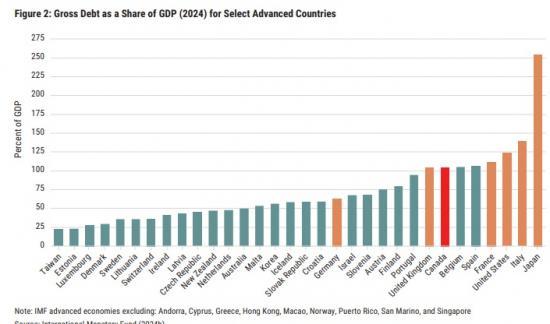Caution Required When Comparing Canada's Debt To That Of Other Countries
21st August 2024

A new report from The Fraser Institute on Canadian national debt paints a different picture than that usually given by the Canadian Government.
The federal government continues to rationalize its debt-financed spending based on international comparisons showing Canada with the lowest level of debt in the G7.
• Of the two broad measures of debt, gross debt includes most forms of debt while net debt is a narrower measure that accounts for financial assets held by governments.
• By using net debt as a share of the economy (GDP), Canada ranks 5th lowest of 32 countries and lowest amongst the G7. By using gross debt as a share of the economy, Canada falls to 26th of 32 countries and 3rd lowest in the G7.
• Canada experiences the largest change in its indebtedness ranking—falling 21 places—when the measure shifts from net debt to gross debt.
• One reason for this pronounced change in ranking is that net debt includes the assets of the Canada and Quebec Pension Plans, which have unique approaches to funding public retirement plans unlike most other industrialized countries, the CPP and QPP invest in non-government assets including equities and corporate bonds.
• As of December 31, 2023, according to Statistics Canada data, there were net assets in the combined CPP and QPP of $716.7 billion.
• According to IMF data, the difference between Canada's gross and net debt was approximately $2.7 trillion at the end of 2023, which means the assets of CPP and QPP explain more than one quarter of the difference.
Read the full report HERE
Pdf 11 Pages
